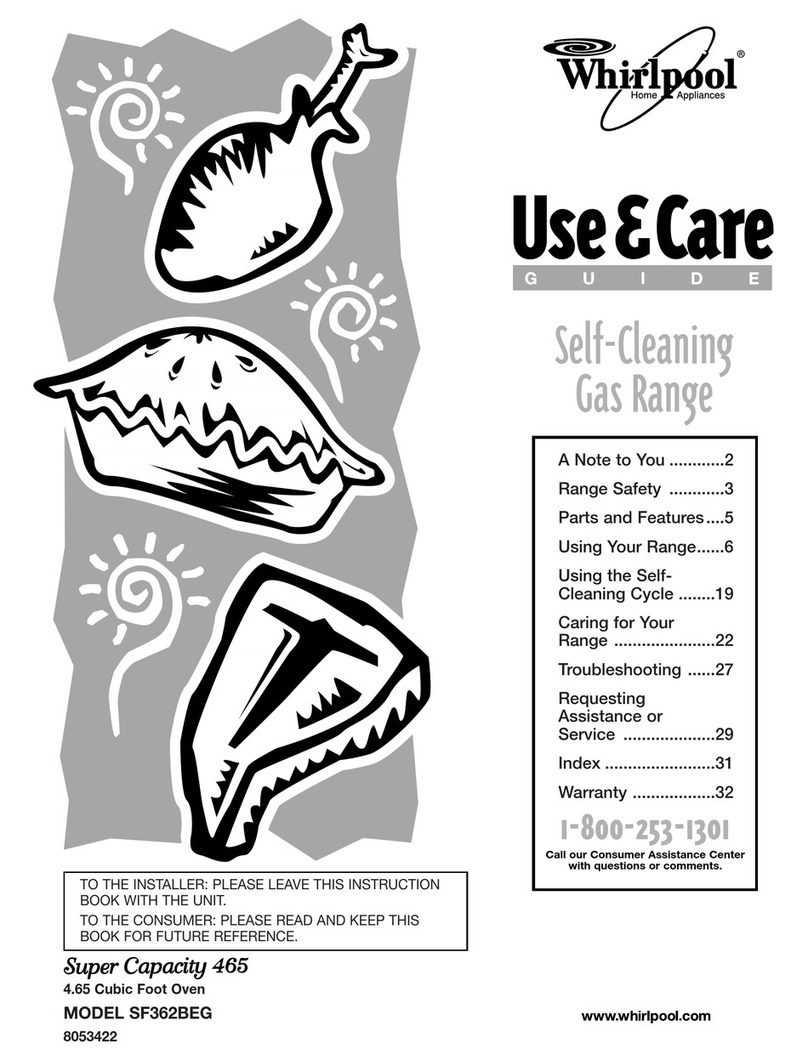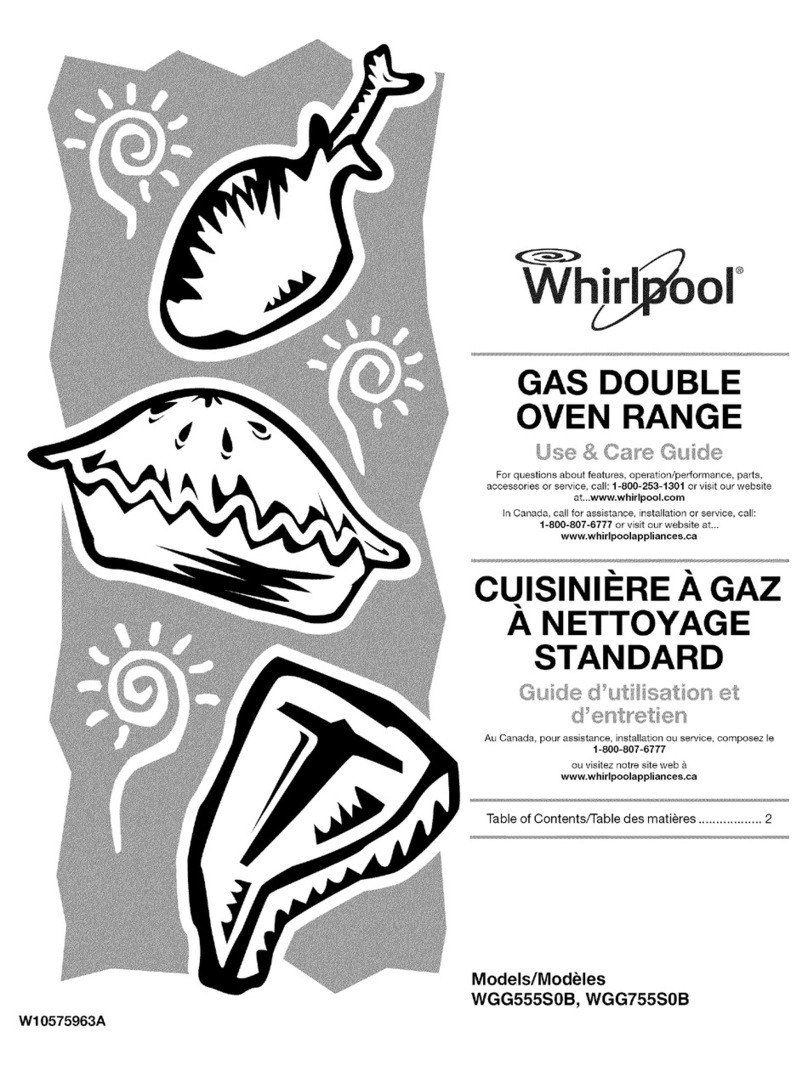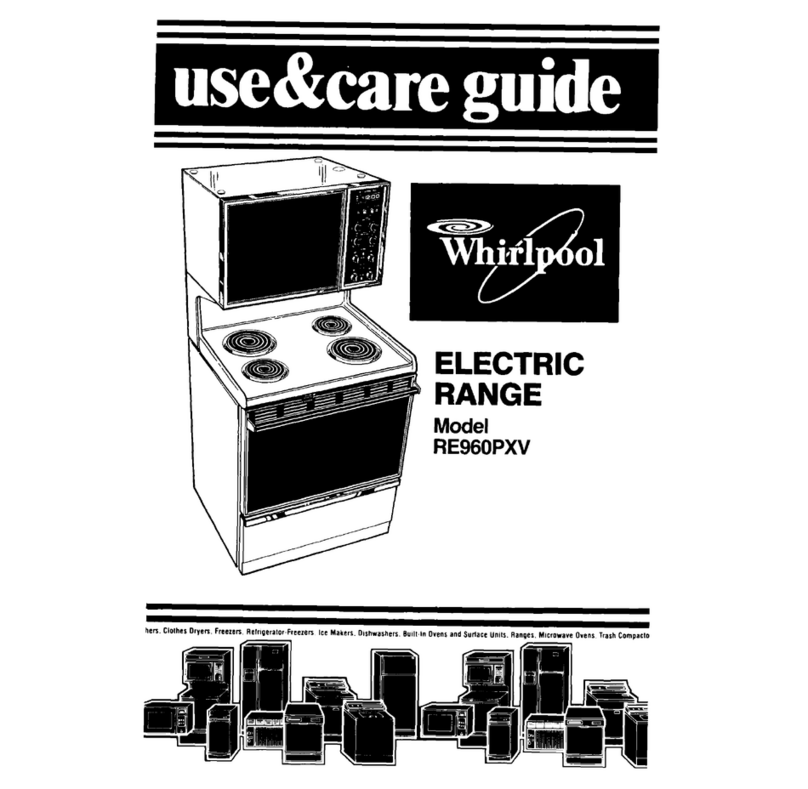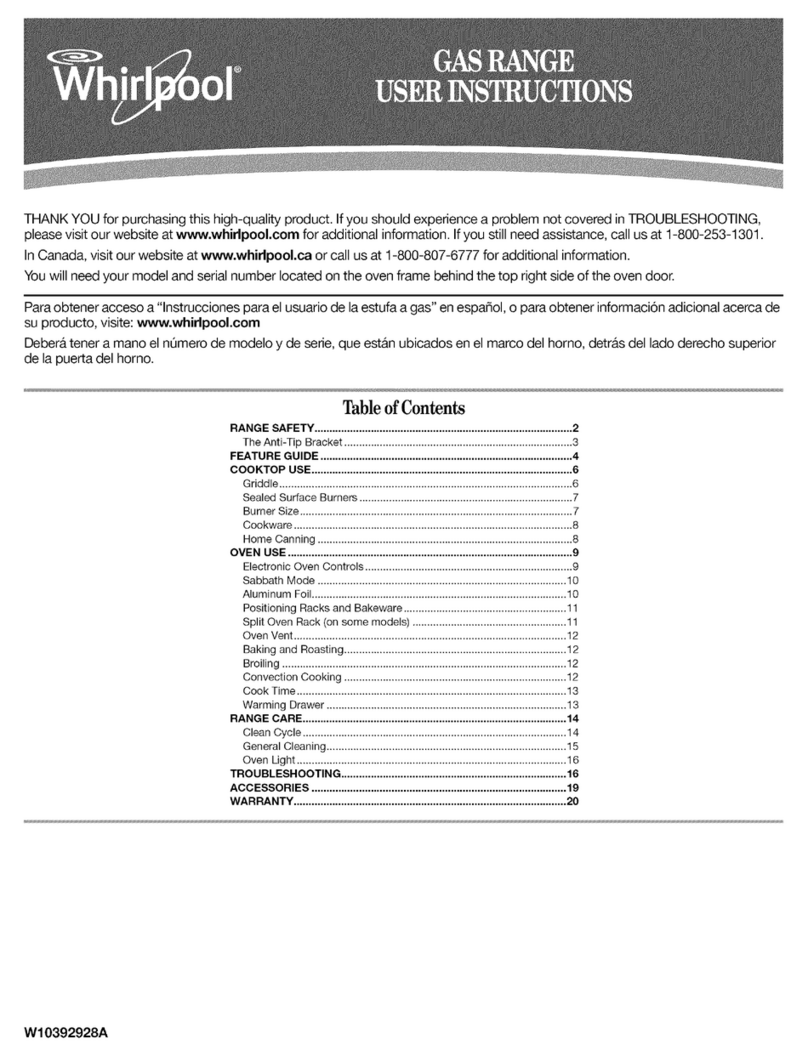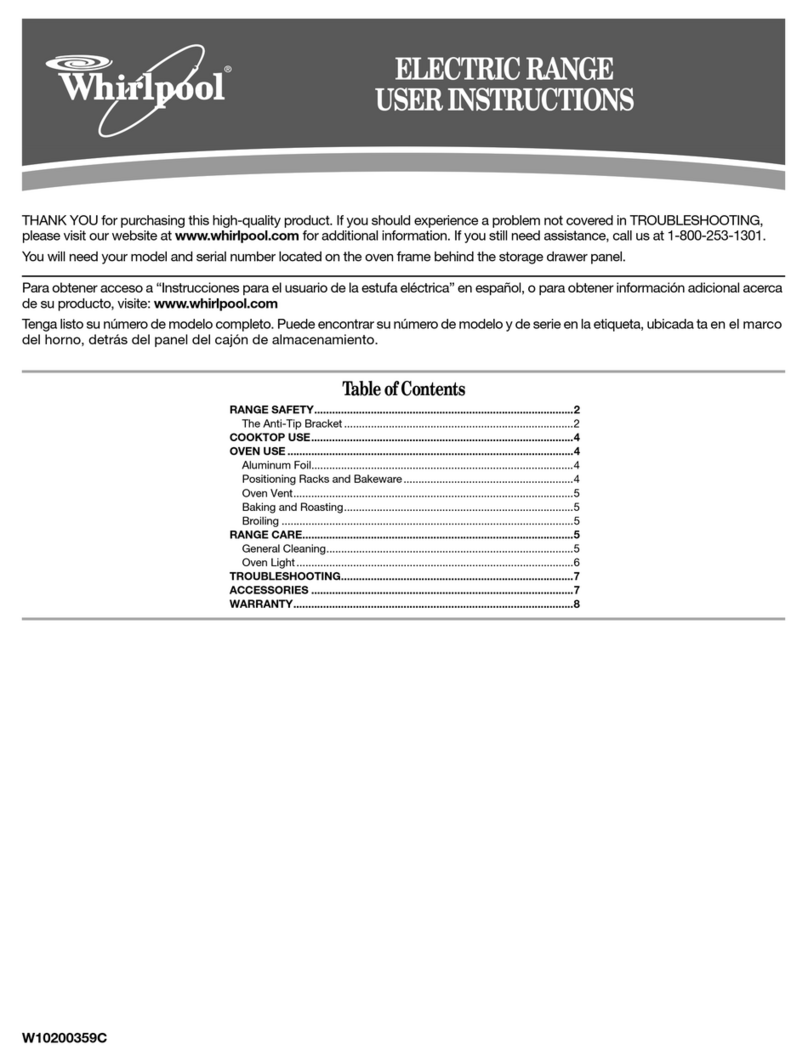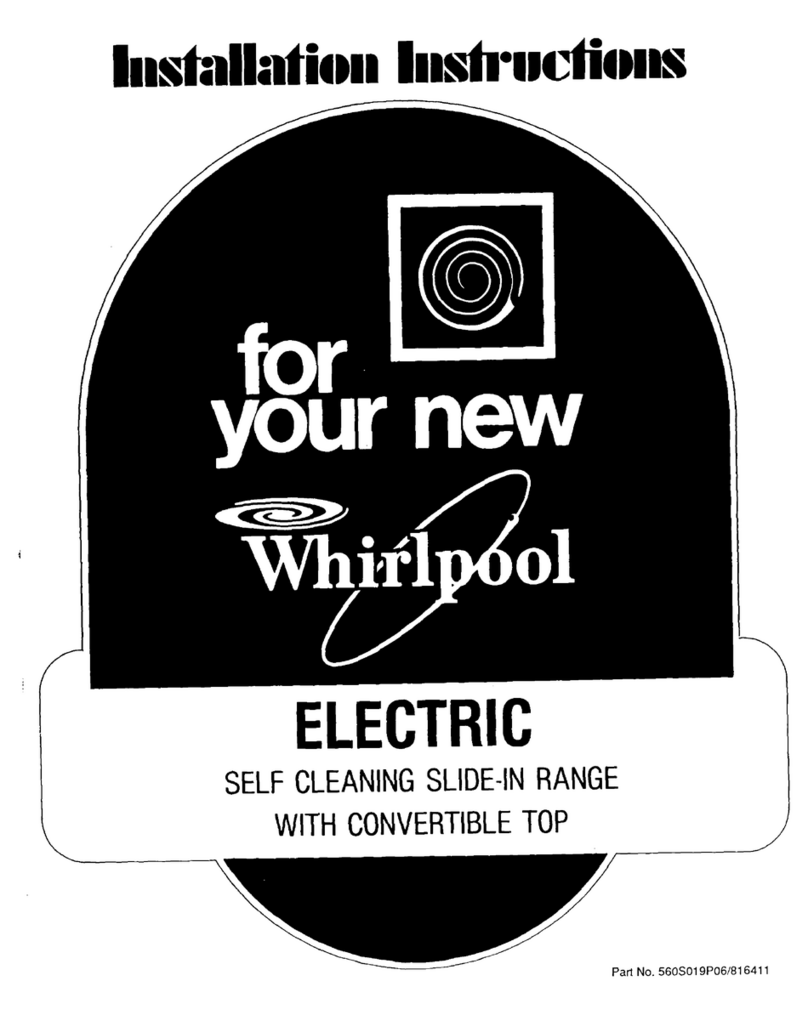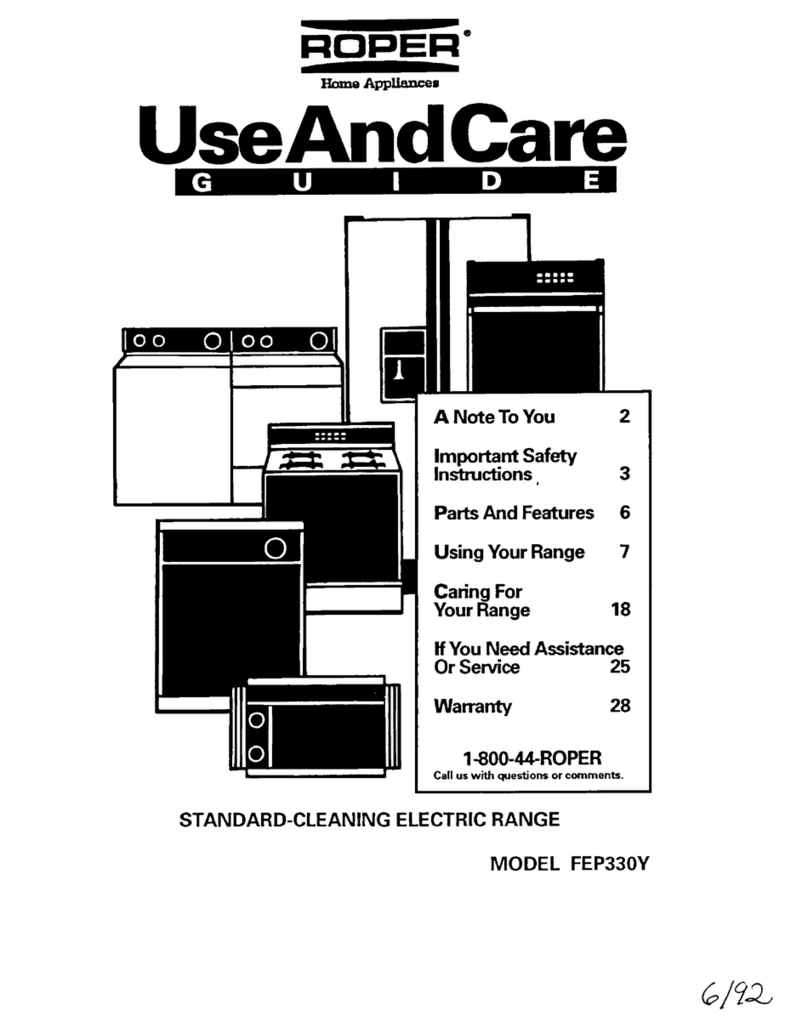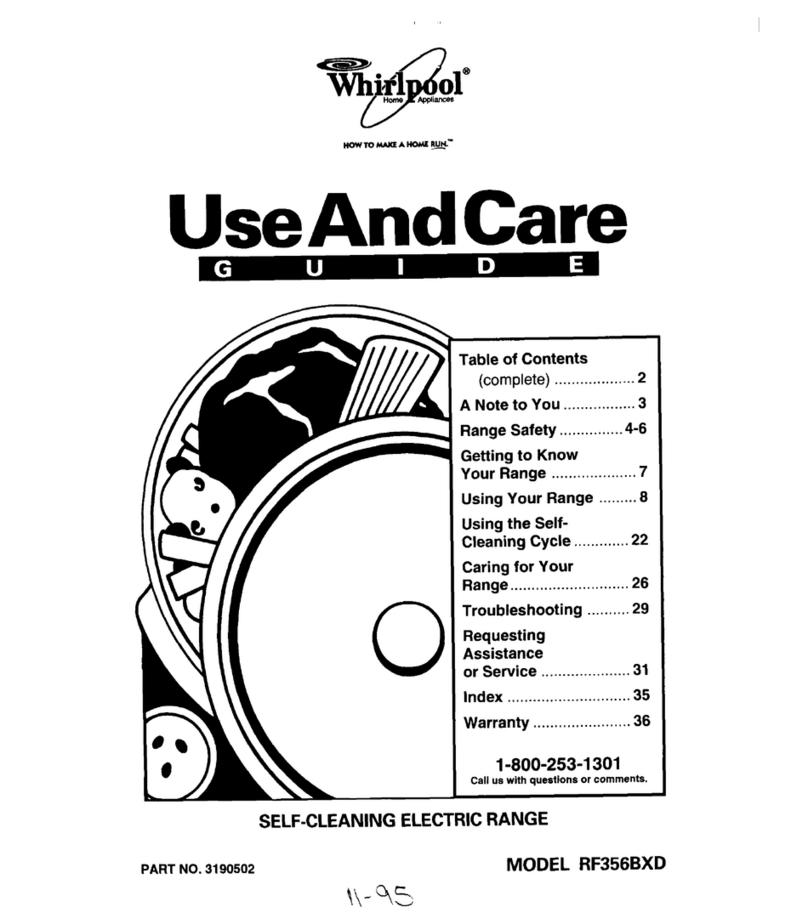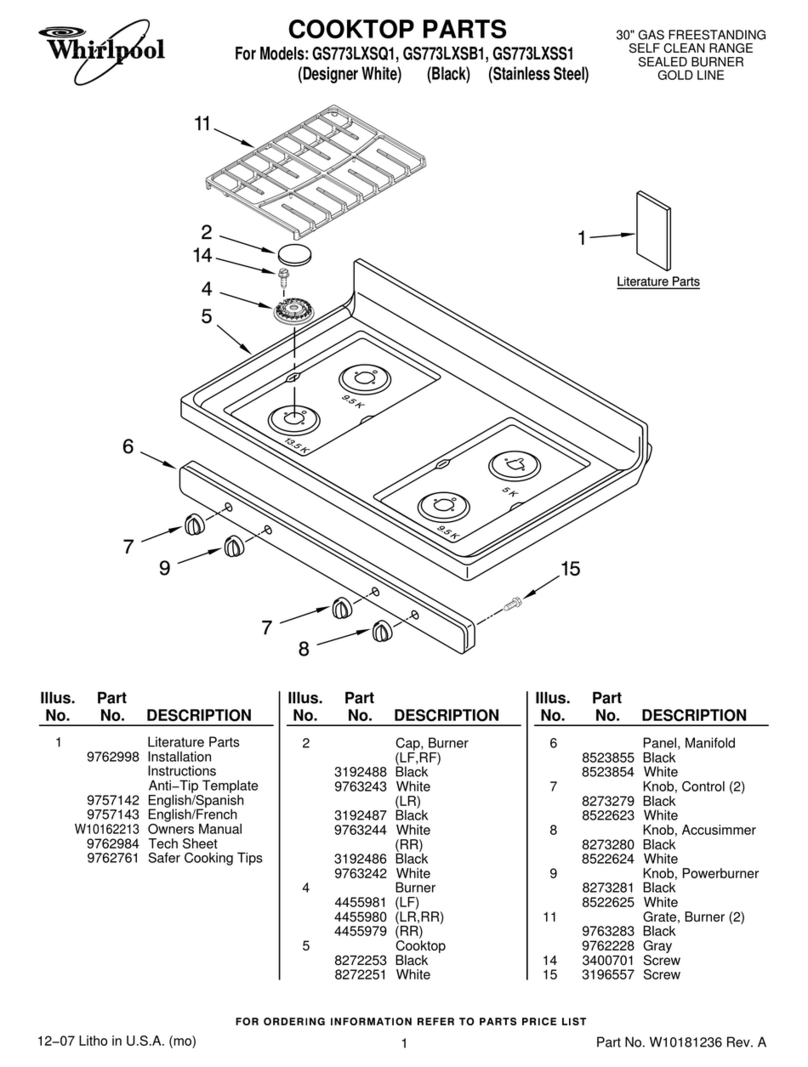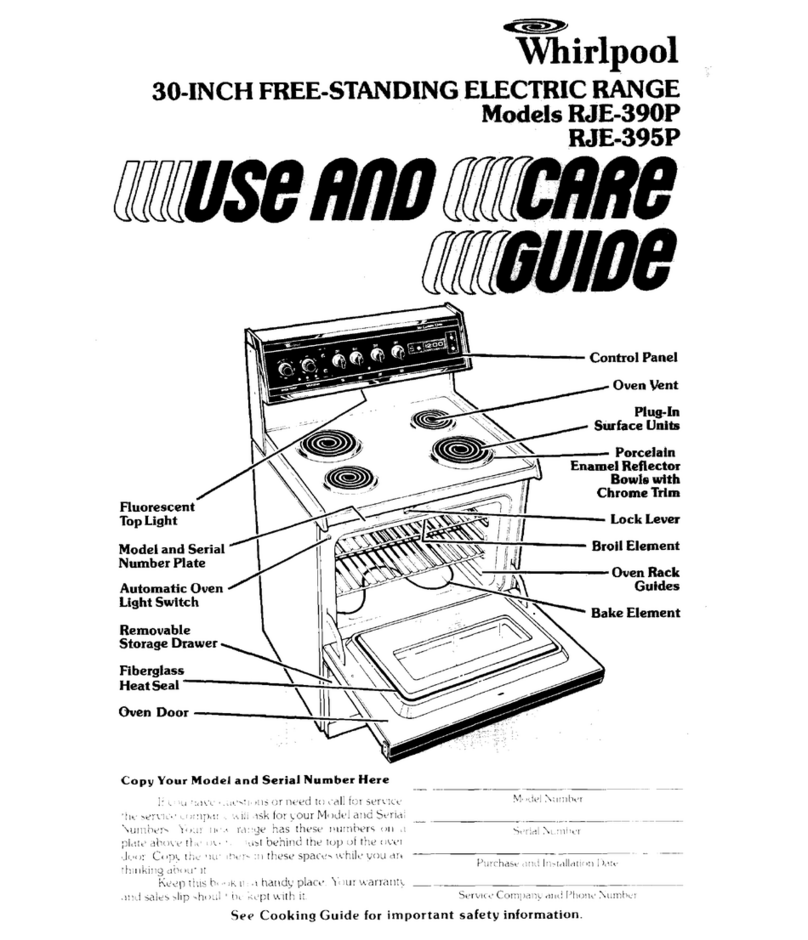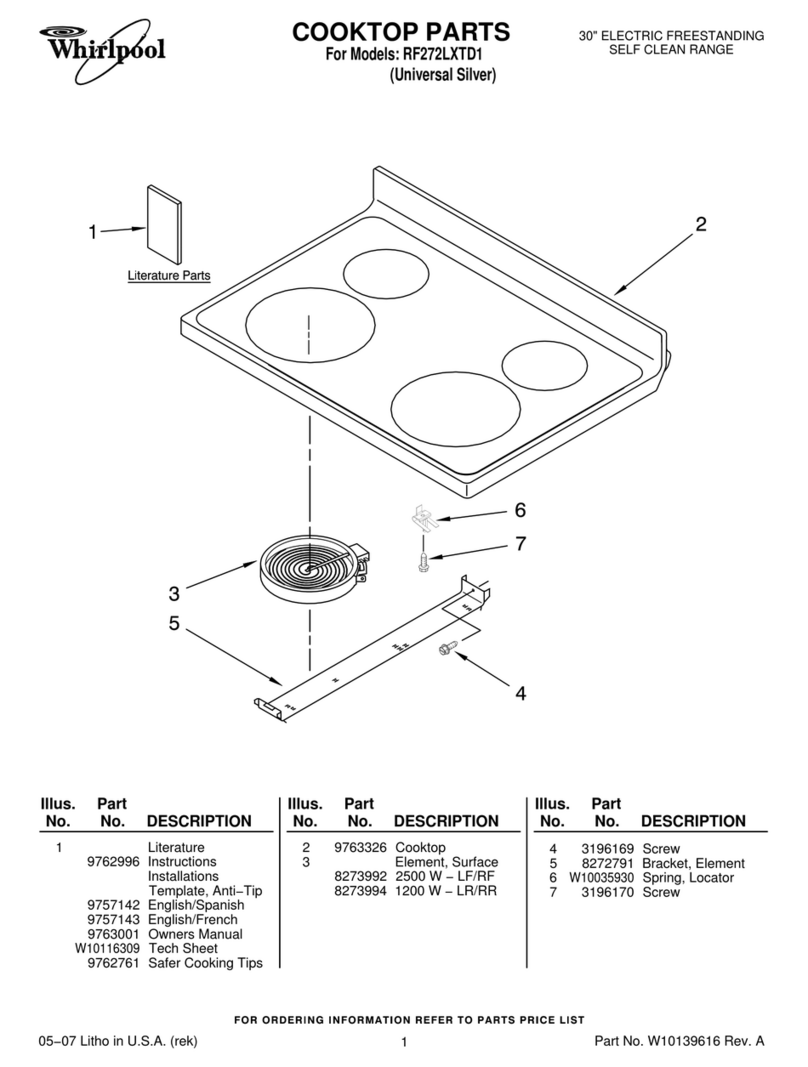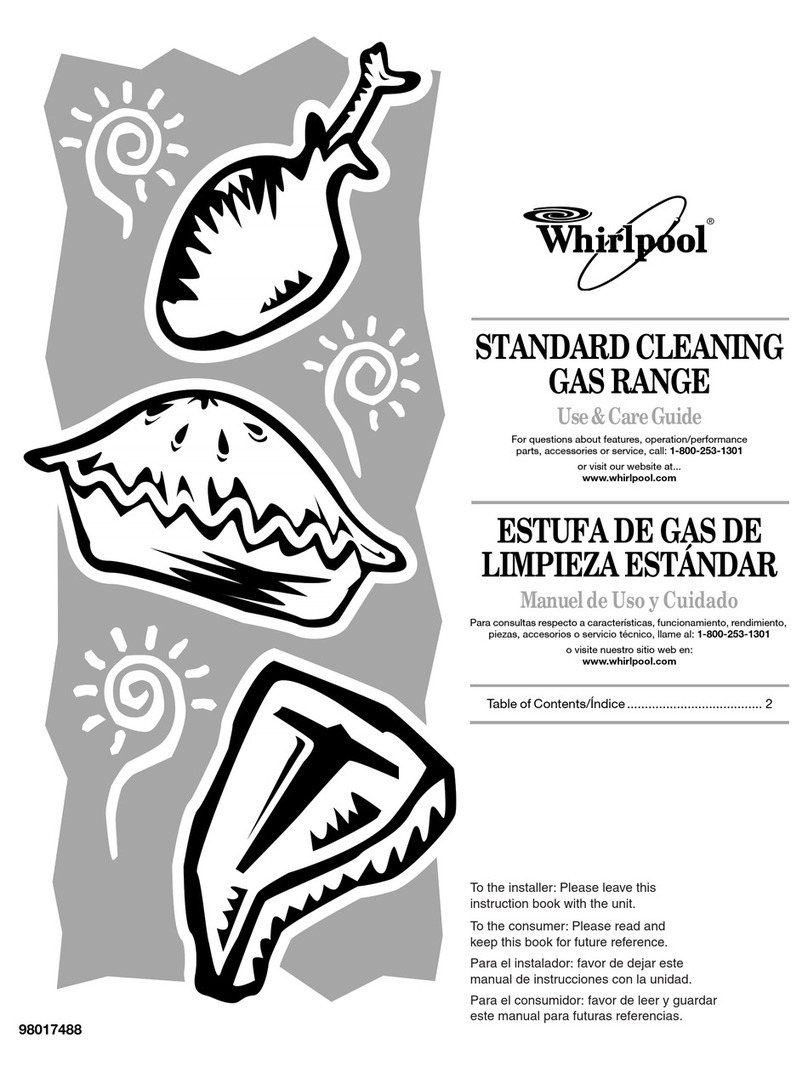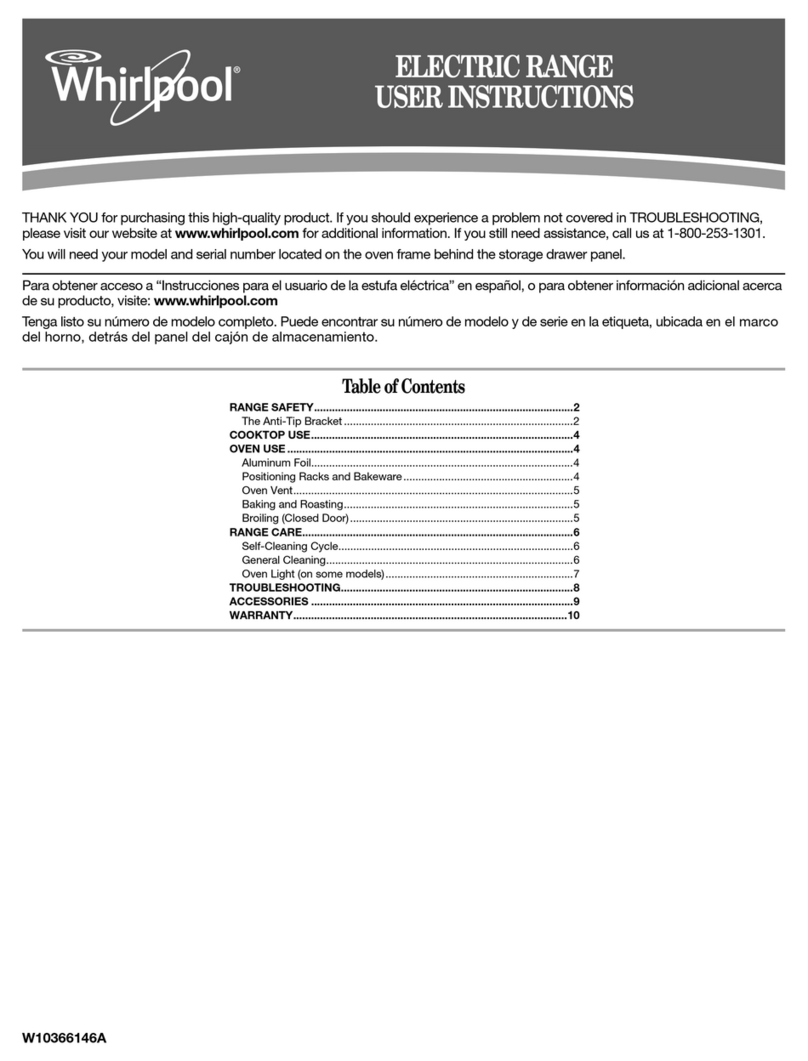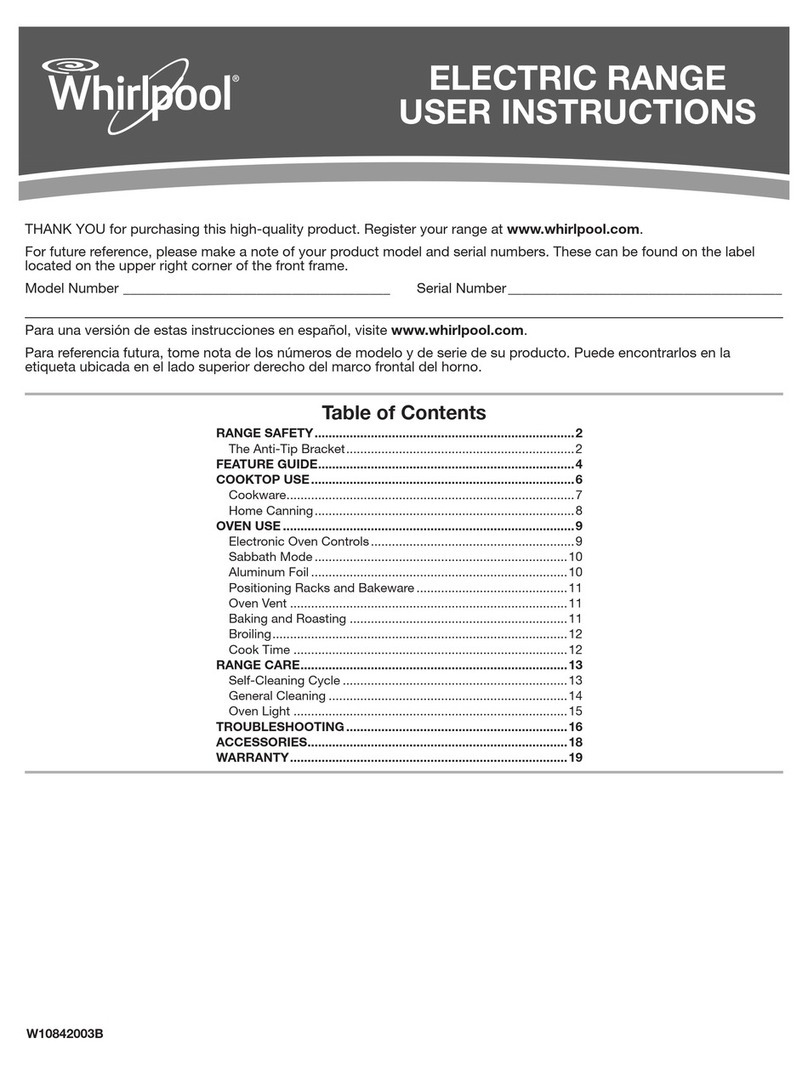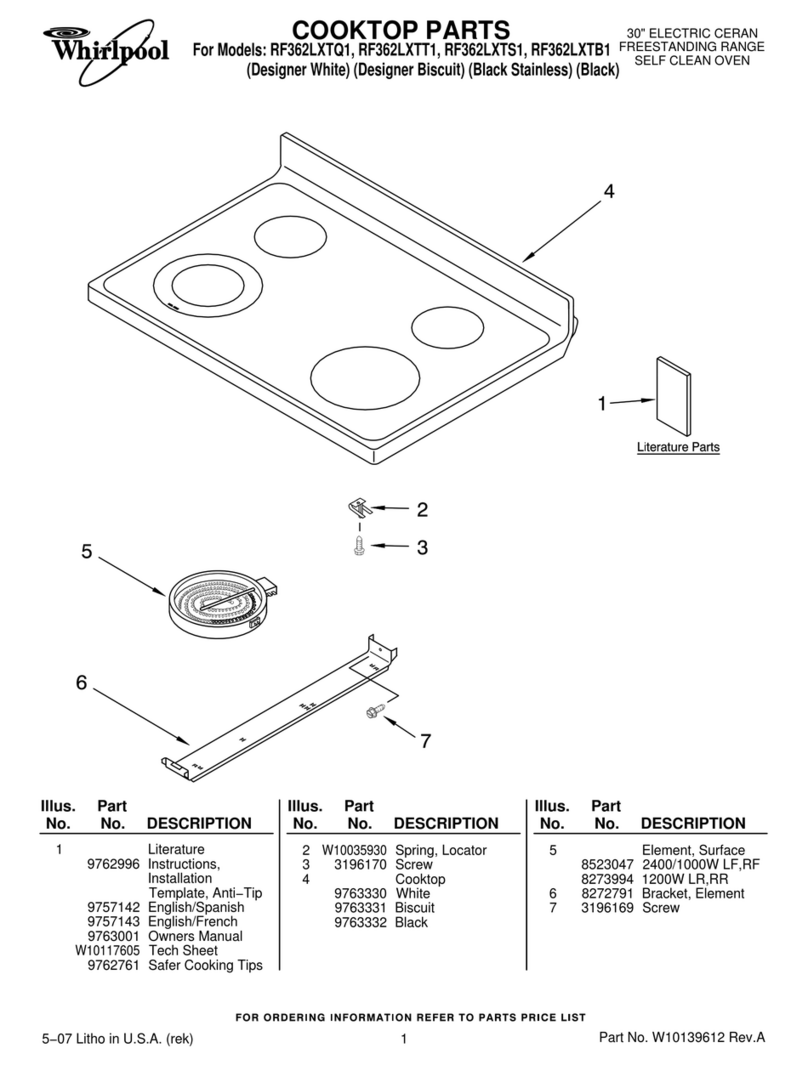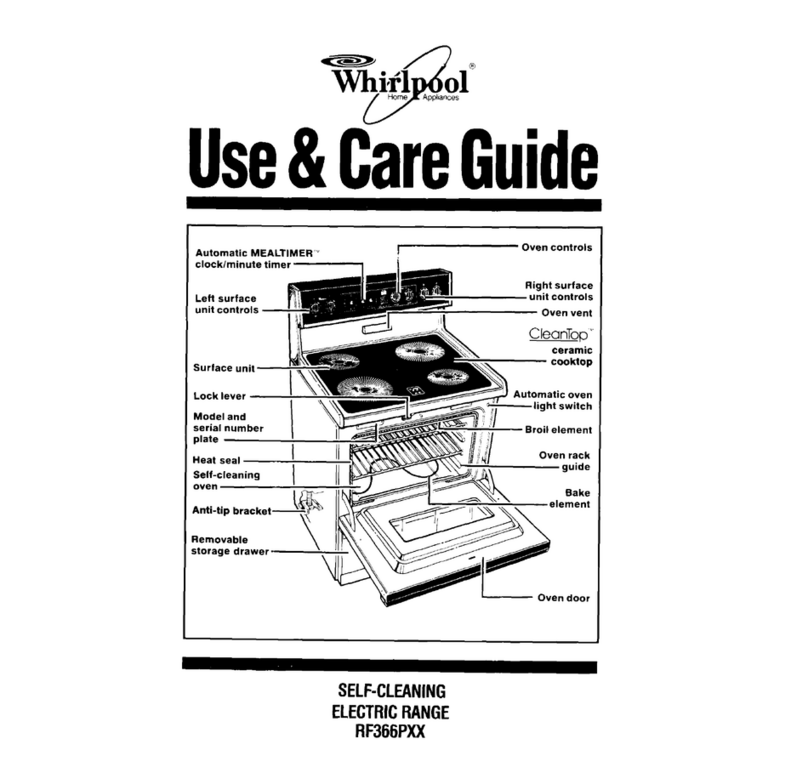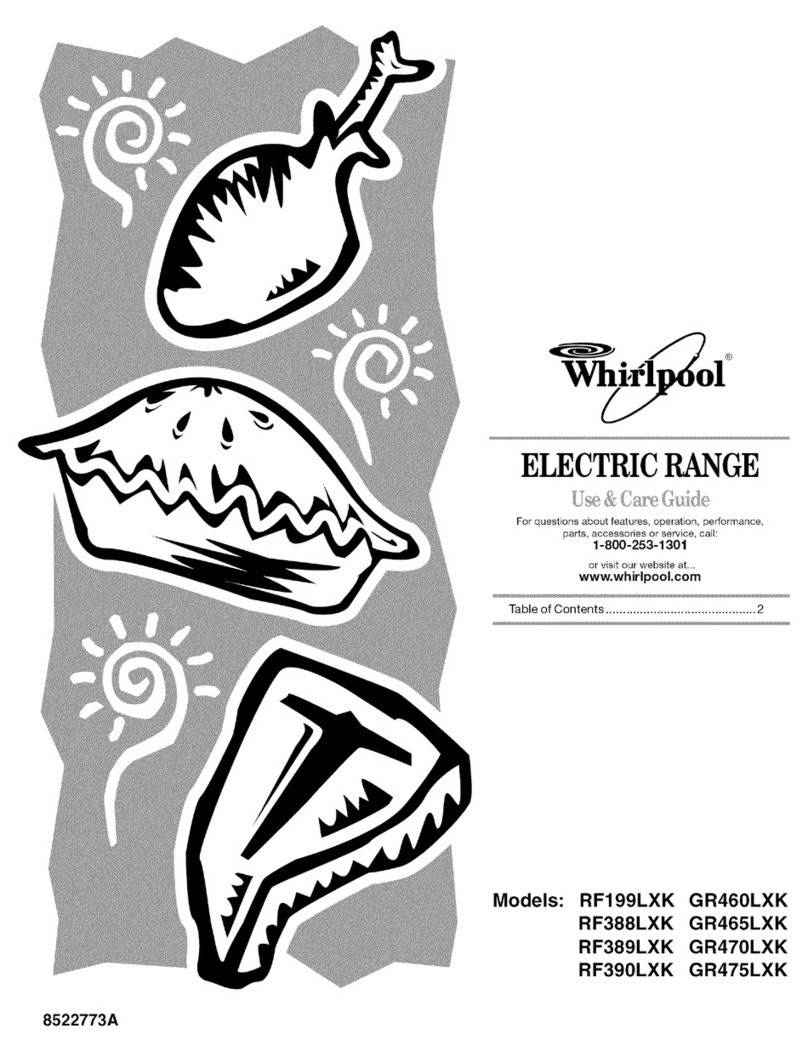SAFETY INSTRUCTIONS (
GLAZED COOKING UTENSILS- Onlycertaintypes VENTILATING HOODS:
of glass,glass/ceramic, ceramic, earthenware, or CLEAN VENTILATING HOODS FREQUENTLY -
otherglazedutensilsare suitableforrange-top sew-Greaseshouldnotbealtowedtoaccumulateonhood
icewithoutbreakingdueto thesudden changeintern- or filter. Whenflaming foods under thehood,turn the
perature, fan off. The fan,if operating,may spread the flame.
IMPORTANT SAFETY NOTICE ANDWARNING
UTENSILHANDLES The CaliforniaSafe DrinkingWater andToxic Enforce-
_ SHOULDBE mentActof1986(Proposition65) requiresthe GOver"
TURNED INWARD norof Californiato publish a list of substances known
AND NOT EXTEND to the Stateof Californiato cause canceror reproduc-
OVER ADJACENT tireharm,andrequiresbusinessestowarncustomers
SURFACE UNITS - of potential exposures tosuch substances.
To reduce the risk of
burns, ignitionof flare- Users ofthis appliance are hereby warned that when
mable materials,and theapplianceisengaged in theself-clean cycle there
spillage due to unin- maybe some low-Levelexposure to someofthe listed
tentional contactwith the utensil,the handleofa uten- substances, includingcarbon monoxide. Exposure to
sil shouldbepositionedso that it is turned inward,and these substances can be minimized by properly vent-
does not extend overadjacentsurface elements,ing theapplianceto theoutdoors during the self--clean
cycle.
DO NOT SOAK REMOVABLEHEATING ELE-
MENTS- Heating elements should never be ira- DEEP FAT FRYERS:
mersed in water.Immersing element in water would Useextremecaution when movingthegreasekettleor (
damageinsulatingmaterialinside element,disposing of hot grease.
DO NOTTOUCH SURFACE ELEMENTS OROVEN
: OVENS: ELEMENTS,AREAS NEAR ELEMENTSORINTE-
USE CAREWHEN OPENING DOOR- Let hot air or RIOR SURFACESOF OVEN - Elements may be hot
steam escape before removing or replacing food.eventhough they aredark in color. Areasnear surface
elements and interior surfaces of oven may become
DO NOTHEAT UNOPENED FOOD CONTAINERS - hot enough to causeburns. During and after use, do
Build-up ofpressuremaycausecontainer toburstand not touch or let clothing or other flammable materials
result in injury,contact heating elements, areas near elements or in-
terior surfaces of oven until they have had sufficient
timetocool. Amongthese areas arethe cooktop, sur-
KEEP OVEN VENT DUCTS(located under rear ele- faces facing the cooktop,oven vent opening and sur-
ment; rear corner of cooktop;between oven door and faces nearthis opening,oven door, andoven window.
control panel of wall oven or on backguard) UNOB- Also, do not allow aluminum foil, meat probes or any
STRUCTED. Blockage of vent prevents properoven other metalobject, other than a utensil on asurface
aircirculation and will affect oven performance.Avoid element,to contact heating elements.
touching ovenvent areawhile oven is on and for sev-
eralminutes afteroven isturnedoff. Some partsof the ANTI-TIP BRACKET:
vent and surrounding area become hot enough to WARNING: To reduce the riskof tipping of the appli-
cause burns, once from unusual usage or by excessive loading of
the oven door, the appliance must be secured by a
PLACEMENTOFOVEN RACKS- Alwaysplaceoven properly installedanti-tip device.To check ifdevice is
racks in desired location while oven is cool. If rack installedproperly: Usea flashlight and look under-
mustbe movedwhilehot, use caretoavoid contact of neath rangetosee that one ofthe rear leveling legs is
pothoider with oven element,engaged in thebracketslot.When removingappliance
for cleaning, be sure anti-tip device is engaged when
rangeisreplaced.Theanti-tip device secures therear
leveling legto the floor,when properly engaged.
-2-


